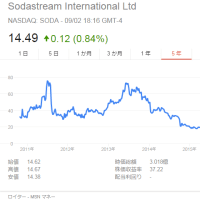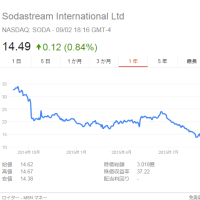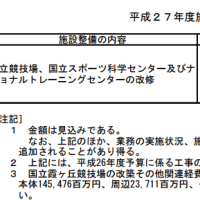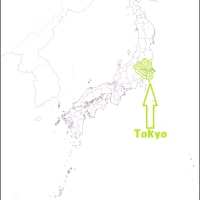2010年、オーストラリア政府が国際司法裁判所(ICJ)に、日本政府が行ってる南極海「調査捕鯨」の中止を求める訴えを起こした。
この辺は以下参照(手抜き)。
・日本政府が国際司法裁判所の判決を無視したら笑えないんだけど(Jun 27, 2013)(2013年6月27日 flagburner's blog(仮))
・「調査捕鯨」に関する裁判の審理が終わったらしいが(Jul 17, 2013)(2013年7月17日 flagburner's blog(仮))
そして、今日、この裁判の判決が下されたのだが・・・。
・国際司法裁判所、日本の捕鯨に停止命令(2014年3月31日 afpbb.com)
・UN court rules against Japan whaling(2014年3月31日 aljazeera.com;AFP)
・International Court of Justice upholds Australia's bid to ban Japanese whaling in Antarctica(2014年3月31日 theage.com.au)
・Japan told to halt Antarctic whaling by international court(2014年3月31日 theguardian.com)
ある意味、日本政府の利益になる気がしないでもないこの判決。
以下、2014年3月31日分 theguardian.com『Japan told to halt~』から前半部分を(略
---- 以下引用 ----
The International court of Justice on Monday ordered a temporary halt to Japan's Antarctic whaling programme, ruling that it is not for scientific purposes as the Japanese had claimed.
Australia had sued Japan at the UN's highest court for resolving disputes between nations in hopes of ending whaling in the icy Southern Ocean.
Reading a 12-4 decision by the court's 16-judge panel, Presiding Judge Peter Tomka of Slovakia said Japan's program failed to justify the large number of minke whales it takes under its current Antarctic program, while failing to meet much smaller targets for fin and humpback whales.
"The evidence does not establish that the program's design and implementation are reasonable in relation to achieving its stated objectives," he said.
He noted among other factors that Japan had not considered a smaller program or non-lethal methods to study whale populations, and that it cited only two peer-reviewed scientific papers relating to its program from 2005 to the present a period in which it has harpooned 3,600 minke whales, a handful of fin whales, and no humpback whales.
The court ordered Japan to halt any issuing of whaling permits until the program has been revamped.
(以下略)
---- 引用以上 ----
一応、俺もこの判決を webcast 上で観てたけど、判決では JARPA II(南極海「調査捕鯨」の現在の正式略称)のいい加減さを(予想以上)に指摘していたのよね。
↓判決本文。
・Judgment Merits(2014年3月31日 icj-cij.org;.pdfファイル)
その一例は、南極海のクジラの状況に関する非致死的調査(non-lethal methods)の扱いに関する日本側の姿勢。
日本側は、裁判の中で JARPA II における非致死的調査の位置づけをどう決めたかについて説明を求められたのだが・・・。
参考までに、2014年3月31日分 icj-cij.org『Judgement Merits』からP.44とP.45の一部を(略
---- 以下引用 ----
(中略)
138. The Court did not hear directly from Japanese scientists involved in designing JARPA II.
During the oral proceedings, however, a Member of the Court asked Japan what analysis it had conducted of the feasibility of non-lethal methods prior to setting the sample sizes for each year of JARPA II, and what bearing, if any, such analysis had had on the target sample sizes.
In response, Japan referred to two documents: (1) Annex H to the 1997 interim review of JARPA by the Scientific Committee and (2) an unpublished paper that Japan submitted to the Scientific Committee in 2007.
139. The first of these documents is not an analysis of JARPA II and is not a study by Japan.
It is a one-page summary by the Scientific Committee of opposing views within the Committee on the need to use lethal methods to collect information relating to stock structure.
Japan stated that this document “formed the basis of section IX of the 2005 JARPA II Research Plan”.
Section IX, entitled “Necessity of Lethal Methods”, comprises two short paragraphs that contain no reference to feasibility studies by Japan or to any consideration by Japan of developments in non-lethal research methods since the 1997 JARPA review.
Japan identified no other analysis that was included in, or was contemporaneous with, the JARPA II Research Plan.
140. The 2007 document to which Japan refers the Court discusses the necessity of lethal methods in JARPA, not JARPA II.
It states in summary format the authors’ conclusions as to why certain biological parameters (listed in relation to particular JARPA objectives) required (or did not require) lethal sampling, without any analysis and without reference to the JARPA II objectives.
141. Thus, there is no evidence of studies of the feasibility or practicability of non-lethal methods, either in setting the JARPA II sample sizes or in later years in which the programme has maintained the same sample size targets.
There is no evidence that Japan has examined whether it would be feasible to combine a smaller lethal take (in particular, of minke whales) and an increase in non-lethal sampling as a means to achieve JARPA II’s research objectives.
The absence of any evidence pointing to consideration of the feasibility of non-lethal methods was not explained.
142. Decisions about the use of lethal methods in JARPA II must also be evaluated in light of the Court’s previous conclusion that a programme for purposes of scientific research may not use lethal methods on a larger scale than is reasonable in relation to achieving its stated objectives in order to fund that research (see paragraph 94 above).
143. The 2007 paper that Japan called to the Court’s attention (see paragraphs 138 and 140 above) states that JARPA’s research objectives, which required the examination of internal organs and a large number of samples, meant that non-lethal methods were “impractical, cost ineffective and prohibitively expensive”.
It also states that “whale research is costly and therefore lethal methods which could recover the cost for research [are] more desirable”.
No analysis is included in support of these conclusions.
There is no explanation of the relative costs of any methods or a comparison of how the expense of lethal sampling, as conducted under JARPA (or under JARPA II, which by 2007 was already operational), might be measured against the cost of a research programme that more extensively uses non-lethal alternatives.
144. The Court concludes that the papers to which Japan directed it reveal little analysis of the feasibility of using non-lethal methods to achieve the JARPA II research objectives.
Nor do they point to consideration of the possibility of making more extensive use of non-lethal methods in order to reduce or eliminate the need for lethal sampling, either when JARPA II was proposed or in subsequent years.
Given the expanded use of lethal methods in JARPA II, as compared to JARPA, this is difficult to reconcile with Japan’s obligation to give due regard to IWC resolutions and Guidelines and its statement that JARPA II uses lethal methods only to the extent necessary to meet its scientific objectives.
In addition, the 2007 paper to which Japan refers the Court suggests a preference for lethal sampling because it provides a source of funding to offset the cost of the research.
(以下略)
---- 引用以上 ----
JARPA II で非致死的調査をどの程度使うかをどう決めたのかについて最低限の説明すらできてないって・・・。
どんだけ、いい加減な理由で JARPA II の活動内容を決めてたんだって話だよ。
しかも、日本側の証人として参加したラーズ・ワロウ(Lars WALLØE)名誉教授は、裁判の中で JARPA II への信頼性に疑問を投げかける発言をしてたとか。
2014年3月31日分 icj-cij.org『Judgement Merits』からP.53 の一部を(略
---- 以下引用 ----
(中略)
180. The Court also notes that the expert called by Japan, Mr. Walløe, raised concerns about the fin whale component of JARPA II that go beyond the sample size.
Mr. Walløe testified that the fin whale proposal was “not very well conceived” for two reasons.
He stated that random sampling of fin whales within the JARPA II research area is not possible, first, because the main fin whale population is beyond the JARPA II research area further to the north and, secondly, because the JARPA II vessels can only accommodate the lethal take of smaller fin whales (a point also raised by Australia).
The Court recalls that Japan identified random sampling as an element of a programme for purposes of scientific research.
(以下略)
---- 引用以上 ----
てっきり日本側は、最低限の理論武装くらいしてると思ってたのだが・・・。
これじゃ、JARPA II を「科学的」と呼ぶのは無理があると言わざるを得ない。
一体どうしてこうなった。
(判決で、JARPA II における捕獲数についても過大だと指摘されてたのは内緒)
つか、日本政府の人達も、ここまで派手に南極海「調査捕鯨」のアレっぷりが世界に晒されるとは思ってなかったんだろうな(苦笑)。
まぁ、これも自分達が招いた結果と言えばそれまでだけど・・・。
この辺は以下参照(手抜き)。
・日本政府が国際司法裁判所の判決を無視したら笑えないんだけど(Jun 27, 2013)(2013年6月27日 flagburner's blog(仮))
・「調査捕鯨」に関する裁判の審理が終わったらしいが(Jul 17, 2013)(2013年7月17日 flagburner's blog(仮))
そして、今日、この裁判の判決が下されたのだが・・・。
・国際司法裁判所、日本の捕鯨に停止命令(2014年3月31日 afpbb.com)
・UN court rules against Japan whaling(2014年3月31日 aljazeera.com;AFP)
・International Court of Justice upholds Australia's bid to ban Japanese whaling in Antarctica(2014年3月31日 theage.com.au)
・Japan told to halt Antarctic whaling by international court(2014年3月31日 theguardian.com)
ある意味、日本政府の利益になる気がしないでもないこの判決。
以下、2014年3月31日分 theguardian.com『Japan told to halt~』から前半部分を(略
---- 以下引用 ----
The International court of Justice on Monday ordered a temporary halt to Japan's Antarctic whaling programme, ruling that it is not for scientific purposes as the Japanese had claimed.
Australia had sued Japan at the UN's highest court for resolving disputes between nations in hopes of ending whaling in the icy Southern Ocean.
Reading a 12-4 decision by the court's 16-judge panel, Presiding Judge Peter Tomka of Slovakia said Japan's program failed to justify the large number of minke whales it takes under its current Antarctic program, while failing to meet much smaller targets for fin and humpback whales.
"The evidence does not establish that the program's design and implementation are reasonable in relation to achieving its stated objectives," he said.
He noted among other factors that Japan had not considered a smaller program or non-lethal methods to study whale populations, and that it cited only two peer-reviewed scientific papers relating to its program from 2005 to the present a period in which it has harpooned 3,600 minke whales, a handful of fin whales, and no humpback whales.
The court ordered Japan to halt any issuing of whaling permits until the program has been revamped.
(以下略)
---- 引用以上 ----
一応、俺もこの判決を webcast 上で観てたけど、判決では JARPA II(南極海「調査捕鯨」の現在の正式略称)のいい加減さを(予想以上)に指摘していたのよね。
↓判決本文。
・Judgment Merits(2014年3月31日 icj-cij.org;.pdfファイル)
その一例は、南極海のクジラの状況に関する非致死的調査(non-lethal methods)の扱いに関する日本側の姿勢。
日本側は、裁判の中で JARPA II における非致死的調査の位置づけをどう決めたかについて説明を求められたのだが・・・。
参考までに、2014年3月31日分 icj-cij.org『Judgement Merits』からP.44とP.45の一部を(略
---- 以下引用 ----
(中略)
138. The Court did not hear directly from Japanese scientists involved in designing JARPA II.
During the oral proceedings, however, a Member of the Court asked Japan what analysis it had conducted of the feasibility of non-lethal methods prior to setting the sample sizes for each year of JARPA II, and what bearing, if any, such analysis had had on the target sample sizes.
In response, Japan referred to two documents: (1) Annex H to the 1997 interim review of JARPA by the Scientific Committee and (2) an unpublished paper that Japan submitted to the Scientific Committee in 2007.
139. The first of these documents is not an analysis of JARPA II and is not a study by Japan.
It is a one-page summary by the Scientific Committee of opposing views within the Committee on the need to use lethal methods to collect information relating to stock structure.
Japan stated that this document “formed the basis of section IX of the 2005 JARPA II Research Plan”.
Section IX, entitled “Necessity of Lethal Methods”, comprises two short paragraphs that contain no reference to feasibility studies by Japan or to any consideration by Japan of developments in non-lethal research methods since the 1997 JARPA review.
Japan identified no other analysis that was included in, or was contemporaneous with, the JARPA II Research Plan.
140. The 2007 document to which Japan refers the Court discusses the necessity of lethal methods in JARPA, not JARPA II.
It states in summary format the authors’ conclusions as to why certain biological parameters (listed in relation to particular JARPA objectives) required (or did not require) lethal sampling, without any analysis and without reference to the JARPA II objectives.
141. Thus, there is no evidence of studies of the feasibility or practicability of non-lethal methods, either in setting the JARPA II sample sizes or in later years in which the programme has maintained the same sample size targets.
There is no evidence that Japan has examined whether it would be feasible to combine a smaller lethal take (in particular, of minke whales) and an increase in non-lethal sampling as a means to achieve JARPA II’s research objectives.
The absence of any evidence pointing to consideration of the feasibility of non-lethal methods was not explained.
142. Decisions about the use of lethal methods in JARPA II must also be evaluated in light of the Court’s previous conclusion that a programme for purposes of scientific research may not use lethal methods on a larger scale than is reasonable in relation to achieving its stated objectives in order to fund that research (see paragraph 94 above).
143. The 2007 paper that Japan called to the Court’s attention (see paragraphs 138 and 140 above) states that JARPA’s research objectives, which required the examination of internal organs and a large number of samples, meant that non-lethal methods were “impractical, cost ineffective and prohibitively expensive”.
It also states that “whale research is costly and therefore lethal methods which could recover the cost for research [are] more desirable”.
No analysis is included in support of these conclusions.
There is no explanation of the relative costs of any methods or a comparison of how the expense of lethal sampling, as conducted under JARPA (or under JARPA II, which by 2007 was already operational), might be measured against the cost of a research programme that more extensively uses non-lethal alternatives.
144. The Court concludes that the papers to which Japan directed it reveal little analysis of the feasibility of using non-lethal methods to achieve the JARPA II research objectives.
Nor do they point to consideration of the possibility of making more extensive use of non-lethal methods in order to reduce or eliminate the need for lethal sampling, either when JARPA II was proposed or in subsequent years.
Given the expanded use of lethal methods in JARPA II, as compared to JARPA, this is difficult to reconcile with Japan’s obligation to give due regard to IWC resolutions and Guidelines and its statement that JARPA II uses lethal methods only to the extent necessary to meet its scientific objectives.
In addition, the 2007 paper to which Japan refers the Court suggests a preference for lethal sampling because it provides a source of funding to offset the cost of the research.
(以下略)
---- 引用以上 ----
JARPA II で非致死的調査をどの程度使うかをどう決めたのかについて最低限の説明すらできてないって・・・。
どんだけ、いい加減な理由で JARPA II の活動内容を決めてたんだって話だよ。
しかも、日本側の証人として参加したラーズ・ワロウ(Lars WALLØE)名誉教授は、裁判の中で JARPA II への信頼性に疑問を投げかける発言をしてたとか。
2014年3月31日分 icj-cij.org『Judgement Merits』からP.53 の一部を(略
---- 以下引用 ----
(中略)
180. The Court also notes that the expert called by Japan, Mr. Walløe, raised concerns about the fin whale component of JARPA II that go beyond the sample size.
Mr. Walløe testified that the fin whale proposal was “not very well conceived” for two reasons.
He stated that random sampling of fin whales within the JARPA II research area is not possible, first, because the main fin whale population is beyond the JARPA II research area further to the north and, secondly, because the JARPA II vessels can only accommodate the lethal take of smaller fin whales (a point also raised by Australia).
The Court recalls that Japan identified random sampling as an element of a programme for purposes of scientific research.
(以下略)
---- 引用以上 ----
てっきり日本側は、最低限の理論武装くらいしてると思ってたのだが・・・。
これじゃ、JARPA II を「科学的」と呼ぶのは無理があると言わざるを得ない。
一体どうしてこうなった。
(判決で、JARPA II における捕獲数についても過大だと指摘されてたのは内緒)
つか、日本政府の人達も、ここまで派手に南極海「調査捕鯨」のアレっぷりが世界に晒されるとは思ってなかったんだろうな(苦笑)。
まぁ、これも自分達が招いた結果と言えばそれまでだけど・・・。



















